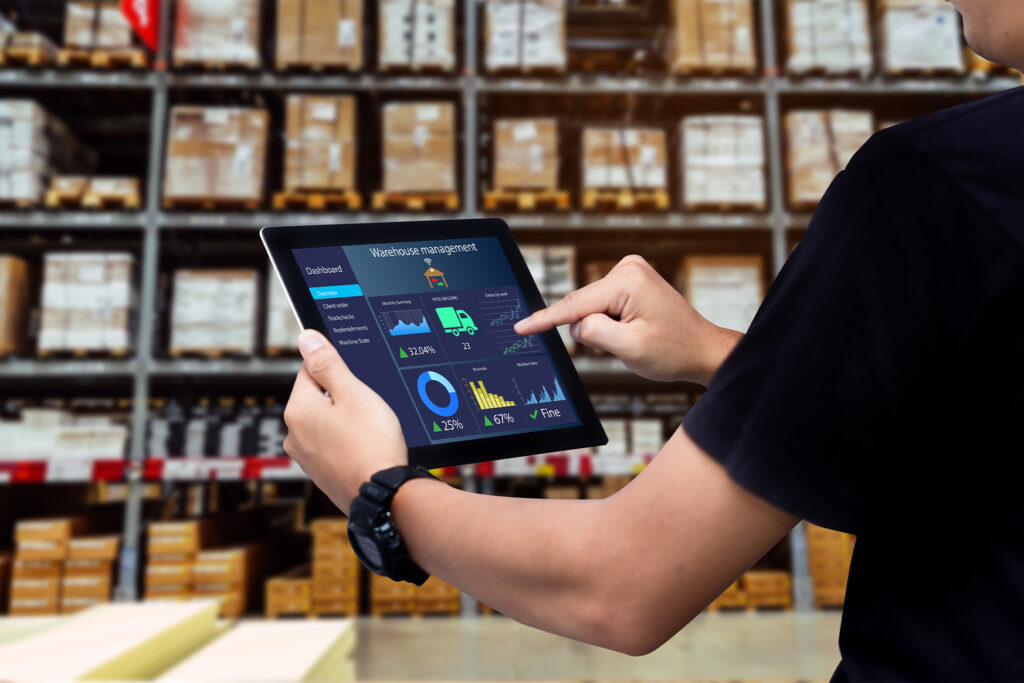Artificial intelligence is a term that can be disconcerting to some and might even call to mind rather alarming science-fiction outcomes. But it really is, in simplest terms, a way to tap large data sets using programs that organize and compare results against outcomes in an analog of experience.
As it does so, AI can perform in an increasingly sophisticated way, and that can be useful in everything from online search and recommendations to pricing optimization to identity verification.
AI and machine learning can take input, examine it and apply what’s discovered in ways that provide better and better outcomes. AI is the term applied to computer programming that can solve problems and make decisions based on established rules and parameters. It uses dedicated math and logic to arrive at and compare conclusions. Machine learning can be more narrowly defined as the function that follows algorithms and statistical models to marshal data and, in application, improve the accuracy of conclusions drawn from it. The machine learning function proceeds without direct human intervention in the context of AI programming.
For example, in retail application, AI when applied to self-checkout security systems, can watch how a shopper is handling goods and compare it to known methods of bypassing the scanner. More importantly, it can look for variations in product handling and learn which are likely to be new attempts at deliberate avoidance and which are simply consumer errors in procedure. Give an AI program access to shopper data, say from loyalty cards, and it can factor in the customer history So, even if a motion would fit the profile of a shoplifter action, the system can determine if the action is likely or unlikely to be deliberate by factoring in customer history. With that input and given the rules established, based on store policy, the system can alert store personnel about a given incident, what it might mean or even ignore it depending on that store policy.
Lily.AI

The ability to fulfill complex functions in a way that actually simplifies a process in progress is an advantage of AI. In shopping, AI can help a consumer find a desired product even if that consumer isn’t quite sure how to describe it. Consumer terms for goods might have little in common with keywords that are provided by the companies selling them. So a sofa might be searched under terms as diverse as multi-seating, couch, divan, Chesterfield or living room furniture.
Lily.AI uses artificial intelligence to ensure that the various search terms consumers use will lead them to the product that they want to find and beyond. The company started in the fashion business, helping apparel companies connect items and shoppers. It has started to do the same with home goods. Lily.AI developed its system to boost product discovery and conversion at scale. It can handle various kinds of data and offers what Lily.AI calls the deepest image recognition platform for retail. While the search element is important, the Lily.AI platform can improve results in recommendations, SEO and SEM as well, and it is agnostic and so works with existing systems.
The secret sauce here is the product attributes that for years have been fed by merchants through spreadsheets and manual processes. And it takes a long time to get something on the digital shelf when you do it that way. It’s often inaccurate. It doesn’t contain broad taxonomy. Taking that language of the customer and feeding it into their search engine and feeding it into their recommender system and their SEO and SEM, that’s where the power really lies.
– Jay Hinman, Lily.AI, Vice President, Marketing
“The secret sauce here is the product attributes that for years have been fed by merchants through spreadsheets and manual processes,” Jay Hinman, Lily.AI vice president, marketing, told HomePage News. “And it takes a long time to get something on the digital shelf when you do it that way. It’s often inaccurate. It doesn’t contain broad taxonomy. Taking that language of the customer and feeding it into their search engine and feeding it into their recommender system and their SEO and SEM, that’s where the power really lies.”
In application, the Lily.AI platform takes basic attributes such as height, width, depth and material elements of an upholstered chair and begins a process.
“We can expand that to a broader taxonomy, but the way that gets done at scale is AI now can scan the retailer’s existing visual product images or even sketches for things that are coming, things that may not have been built yet but are coming for next season and also the descriptions, and take all of that and expand the notion of the attributes, Hinman said. “So what was once five or six attributes now becomes 15 to 20 different attributes. How that plays downstream is, the person who is searching for it now, since we all search uniquely, we can put in those things that matter like the material, the size, whatever, and find what we’re looking for. Online search conversion tends to be about two-and-a-half percent for retailers, this is where you take this to 3% to 4% to 5%.”
In this case, AI can help retailers and vendors who work with them on digital sales ensure that consumers have more satisfying shopping experiences by relating different terms being used to describe the same things and helping shoppers connect with the merchandise they want.
“Consumer expectations have changed,” Hinman said, in part because of Amazon and the effort it has put into refining search through the use of algorithms and filters, which can usually “narrow you down to what you’re looking for. This isn’t being replicated on a lot of major retailer sites.”
A site search for a shirt sometimes can include hand towels, an example that has actually happened, Hinman said. Consumers today expect better from site search and increasingly from other virtual utilities.
“The search example is the most obvious one,” he says. “So having searches that convert, that’s what most people initially came to us for. But that universal language of the customer, the customer-centered product attribute language can be used in so many different places. It’s not just in search, it’s in the recommendations.”

Even when someone finds the sofa that’s just right, the shopping experience isn’t necessarily at an end, and AI can help with getting the next step right.
“What kind of end table goes with that? What kind of lamp goes with that?” Hinman considered.
It also goes into demand forecasting, where knowledge of consumer past preferences and purchases can provide an understanding of what might spark some interest a year hence. The information gathered establishes a customer profile and generates a pattern of propensity that a retailer can apply automatically at the moment a past shopper returns to a site.
“Understanding why they are buying and not just what they are buying has a significant effect,” Hinman said. “Taking this across the retail value chain is really where this becomes very transformational.”
All that works within a site, SEO and SEM enhanced by AI that aligns with a search engine to help boost a product onto the first page that emerges, another benefit that can contribute to a conversion down the line.
In one way of looking at it, the help Lily.AI offers is analogous to that provided by a traditional retail salesperson in a physical store. Effectively, the AI-powered search engine sizes up the customer, gets an idea about what they’re looking for and uses experience to get them in front of the right merchandise to facilitate a sale.
“It’s to replicate the in-store experience online,” Hinman says. “It’s just like having a personal shopper at your side.”
The salesperson — the AI that can use description and the digital version of experience to connect shoppers to what they want — is the product of a technology that is becoming more generally available. Lily.AI now is scaling its platform for mid-market operations with a more turnkey package.
Revionics

Pricing optimization is typically a problematic practice given the lag between events, analysis and response, in addition to the variety of approaches that can be taken to it. AI takes a role in how Revionics speeds up the pricing optimization process to maximize outcomes as it continually assesses sales activity as it occurs and makes connections across categories and over time. The technology can look broadly, evaluate and learn so that it can even report if raising the price of cleaning fluid might depress sales of steam mops. Given instruction, AI can adjust then evaluate and report results while continuing to make real-time modifications to pricing.
AI drives Revionics’ price optimization engine by providing concise recommendations that inform business decisions based on those factors that are most competitively and operationally important. Matt Pavich, senior director of retail innovation at Revionics, an Aptos company, said that once businesses begin to see the value of AI-driven analysis and guidance, they can capitalize on the benefits provided.
“One of the things that’s critical with AI is that it offers the clarity and confidence to make the right decision when taking a pricing action,” Pavich said.
“For instance, with Revionics, if the recommendation is to go from $8.99 to $7.99, you should know what’s driving that recommendation: maybe it’s a competitor move, maybe it’s a private label alignment with a national brand gap. Maybe it’s just pure science-based elasticity-based pricing that’s making that recommendation. The first thing is that you have to have that buy-in into the system.”
Taken a step further, AI also can help companies determine which stores in a chain are effectively keeping up with pricing changes, as well as which stores are more or less capable of executing price changes.
“The analytics that exist to understand what is going on — compliance, adoption — is really taking this to the next level,” Pavich said. “With our capabilities and with our pricing insight engine, we have a lot of reporting and analytics so you can see compliance. Let’s say corporate says you have to go from $2.99 to $2.69 to match a competitor. You can very easily see which stores are not following the strategy. You can see the impact of not taking a strategic suggestion. So not only are you seeing compliance amounts, but you can compare compliant stores and pricing zones to non-compliant ones. Then you can say, this is value that’s been lost. So from a reporting perspective, there are a lot of tools available to understand what’s working and not working. Then you can have that conversation to say, by not taking those prices, you hurt the company by X, whatever way you’re trying to get your store managers to be more effective.”

Matt Pavich, Senior Director of Retail Innovation, Revionics
Sophisticated price optimization also can help retailers deal with another circumstance that challenges them today: Labor. Price changes have to be made on the sales floor, Pavich said. However, if a retailer makes a price move but doesn’t have the labor in store to execute it, the entire initiative can go haywire. AI helps create a level of proficiency that allows retailers to accommodate labor realities more effectively.
“There’s the ability to prioritize pricing action,” Pavich said. “So if you’re in a labor constraint situation, and certain stores or zones that just don’t have the labor to take pricing actions. You can say, okay, the science says these are the 500 prices to take, but we know you can only take 300. So you should prioritize these 300.”
Pricing optimization applied to physical stores can help brick-and-mortar operations deal with online operations on fairly equal terms. Pricing in the e-commerce world is based on algorithms that continually update what consumers pay for goods, optimizing pricing in real-time with the aid of functionalities including AI and, when authorized, making changes immediately. As such, pricing optimization guided by AI can make determinations and adjustments that physical stores can execute as quickly as available labor allows or even quicker when networked electronic shelf tags are in operation.
Promotions are another area where pricing optimization powered by AI can help, in this case by providing companies evaluations on how a particular push drives sales in a given set of circumstances.
Pavich notes that ineffective promotions are not only wasted opportunities to drive store sales but also “a huge drain” on store labor. Prepping for promotions, including such tasks as swapping out endcaps, wind up wasting labor dollars when results don’t meet strategic goals. At times, AI-supported analysis can provide input on how to make promos more effective. However, Pavich said, it also could suggest where to edit the promotional calendar. As such having good promotional optimization and effectiveness tools in place can help companies understand when they should stop running promotions that are only hurting the bottom line.

AI also works to make forecasting more effective, which can involve assessing a multitude of factors and their potential on future business. Pricing optimization using AI can help retailers make quick and measured adjustments that can advance effective responses.
“The pricing team isn’t just sitting there just executing,” Pavich said.
Rather, he said, they’re looking at pricing differentiation versus key competitors, they are reviewing the effect of percentage changes on key and background items. With AI, they can evaluate potential changes based on rapid analysis across the entire available database to arrive at refined evidence-based forecasts.
Forecasters can draw conclusions after “running all those sensitivity analyses to say, this strategy, if we move from A to B, can increase our profit, or grow our share or improve our competitive position by X,” Pavich continued. “That’s the real power in it. The real value comes is to have the strategic levers to get better, to monitor if what you did worked, to monitor how to be even better from there. And the system gets smarter as you use it more and more, so not only now are you getting better by adapting your strategy, but with each adaptation, the system is getting better at what will happen next. We’ll have better models, better forecasts. It’s a kind of virtual cycle. You are evolving as the market is and the continuous improvement potential is really there.”
That’s the real power in it. The real value comes is to have the strategic levers to get better, to monitor if what you did worked, to monitor how to be even better from there. And the system gets smarter as you use it more and more, so not only now are you getting better by adapting your strategy, but with each adaptation, the system is getting better at what will happen next. We’ll have better models, better forecasts. It’s a kind of virtual cycle. You are evolving as the market is and the continuous improvement potential is really there.
– Matt Pavich, Senior Director of Retail Innovation, Revionics
Solid forecasting not only makes operations more effective, Pavich said, but it can enhance and improve relationships with vendors who can work with the retailer on pricing adjustments that come from a deeper understanding and operative anticipation, which can improve the supplier’s ability to respond.
“It lets both find a common ground, and you can find it’s a win/win for the retailer and the vendor.” Pavich said.
When applied to particular circumstances, AI can drive conclusions through immediate analysis and deliver specific information that can be the basis for quickly improving performance against strategic goals. However, because, in essence, it learns by continually evaluating results to deliver better results, AI also can help retailers cope with change over time as store demographics and competitive circumstances change. And, in an interesting turn, AI does so not by evaluating age or ethnic evolution at the market or even store level, nor does it do so by considering what new rival opened a store down the street. Rather than introducing another level of complexity into evaluation where local changes are in evidence, AI just keeps on doing what it always does — processing data to provide information about changes as they are emerging within the context of the particular business.
“That’s why the AI analytics are very critical,” Pavich says. “If you think, going back 10, 20 years, retailers would try to base their strategies on demographics. They’d say, we have to be priced competitively on Goya in Miami. AI has taken it to that next level of sophistication where you’re not even looking at the demographics. You’re looking at what the actual consumers are doing, what they’re voting on with their purchase behavior every day. AI is making that adjustment in real-time. As markets shift and certain things become more popular or less popular, it’s making those adjustments and it can do it fast.”
In essence, because information is analyzed as it arrives, the retailer doesn’t have to apply different filters to different stores or zip codes or cities. Pricing strategy in its particulars is applied based on actual occurrence with a granularity that subordinates past analytical refinements based on factors such as demographics or market conditions at any moment. In application, AI-based price optimization can produce wins when conditions suggest that losses are more likely.
Even when market changes are swift and extraordinary, AI gives operations an edge.
“We’ve experienced numerous disruptions in the past couple of years, obviously COVID being one of them, and the science held,” Pavich said. “Inflation is another example of, it’s not just about preferences, but it’s about the prices of these products going up. How are consumers reacting in real-time, and how is it different in different markets?”
In essence, because information is analyzed as it arrives, the retailer doesn’t have to apply different filters to different stores or zip codes or cities. Pricing strategy in its particulars is applied based on actual occurrence with a granularity that subordinates past analytical refinements based on factors such as demographics or market conditions at any moment. In application, AI-based price optimization can produce wins when conditions suggest that losses are more likely. Pavich said, for instance, that, because of price optimization, Revionics customers haven’t to raise their prices as much as inflation might suggest.
“Optimization has really helped balance price increases and decreases on important items. It’s been a win/win. They’ve gained share. They offer better prices to consumers and that’s an example of the science benefiting everyone, Pavich said.
Liquid Avatar
![]()
As the Internet evolves, AI will play a central role in some developments and a supporting role that helps advance others.
Looking forward, two questions hang over the online world according to David Lucatch president, CEO and chair of Liquid Avatar: Are you really who you say you are? And who manages your data? To address both those questions, Liquid Avatar has created a digital identity wallet similar in conception to the kind of pay wallets that already exist online.
AI, in this case, plays a particular role in enhancing the functionality of emerging identity technology.
“Our group of companies under the Liquid Avatar banner focus on digital identity, which is empowering users to manage control and benefit from their identity and personal data,” Lucatch said. “We also, as a byproduct of that, do work in the digital realm for NFTs, avatars and digital credentials. And in association with that, we work in the metaverse. If you think about it, the biggest challenges the online world has today are: Are you a real person and who manages my data? The answer, according to most of the laws out there, is that I should be managing my data, so I can now prove I’m a real person when I’m online and I can have a proxy like an avatar I can put in the metaverse.”
Lucatch draws a contrast between real-world and online transactions. In the real world, he said, you wouldn’t be able to tell a store that you left your wallet behind but you would like to write down your name, address and telephone number and leave with your purchase.
At a time when a large proportion of actors online aren’t real, and a large proportion of such phantoms are bad actors with nefarious intentions, Liquid Avatar is one of a few companies that can verify identity online and allow people to remain anonymous and in charge of just how much personal information they allow a company to use in an interaction and for how long.
The next generation of the web will bring a change of focus for individuals and businesses who have been interacting with customers they really can’t be sure are even real.
“If I know when I went to do advertising through social media that 60% of people that I’m going to reach are fakes, that changes my business decisions, that changes the way I spend my money,” Lucatch said. “Right now I have no way of telling who is real and who’s fake. Going into Web 3, Web 3 is called the owner economy. Web 1 was about information, Web 2 was about social socialization and e-commerce engagement. Web 3 is about having people empowered to manage and control their data, and to interact with people in a way that is valuable and real.”
So, not only in transactions but in engagement, knowing people are real on at least a basic level is an advantage of personal data control. Private blockchain is a critical component of establishing and securing online credentials. AI works to provide specific advantages.

If someone is providing self-attested biometrics, including as to age, Liquid Avatar can collect a facial map just as a driver’s license includes a picture.
“In the process of doing that, we do artificial age estimation,” Lucatch said. “You say you’re 35, but the artificial intelligence age estimation says you’re 12. So, that’s a weak result.”
Liquid Avatar also uses artificial intelligence in providing information from an individual to another party under permission guidelines. Essentially, AI enhances specific functions of the wallet Liquid Avatar is creating.
Laws and regulations, some already in place in Europe and California and some coming in Canada, have been changing the rules that govern data. As this occurs, data is moving out of corporations and into the hands of individuals, Lucatch noted. In that case, individuals will only need to share as much data as is necessary for any interaction. A liquor store clerk who is checking a driver’s license to ensure a purchaser is of legal age doesn’t need to know that person’s address, but it’s there. Online, as opposed to the real-world transaction, the address would be captured and used in any number of ways including in future marketing initiatives. So, organizations today can capture ancillary data they can use to their benefit without permission or offering any value in return, at least for the moment.
In addition, Lucatch pointed out, effective identity verification can help keep 35-year-olds out of chat rooms for 12-year-olds and prevent 12-year-olds from using their parents’ credit cards to purchase anything from streaming subscriptions to cars. Today, it’s easy to skirt preventative measures, but in the near future, with secure online identities established, it will be a lot more difficult, Lucatch said.
Although it may seem that corporations will lose out, the example of how knowledge that false identities online change business decisions hints at how organizations can benefit from identity verification. Organizations that want to use personal data will have to incentivize individuals to share it. Even if it might come at some price, Lucatch pointed out, the incentive eliminates the cost of cleaning up and trying to act on data skewed by fake personas.
Identity verification also allows better outreach because an organization that only wants to target a specific group of individuals, whether by geography, demographics or interests, can have greater certainty that it is reaching them. At that point, the organization can provide incentives to capture just the data it needs from them. Even with reviews, identity verification addresses the issue of fake and often purchased input that has proven difficult and often expensive for businesses to confront and annoying for consumers to weigh.
“Better data allows you to make better decisions,” he says.
If you have dirty data, artificial intelligence doesn’t help you,” Lucatch said. “How do you get clean data? You start with, do you have real users? Once you have real users, you can offer them benefits to participate because you know they are real users. You can further qualify them and verify them as you move forward, and you get really good clean data on which you can make great business decisions.
– David Lucatch President, CEO and Chair, Liquid Avatar
Once an organization is in contact with the right people and has bargained for the data it needs, AI takes a role in the organization and mining of the data, which now is, in essence, clean. And clean data, emerging from the right people under the right conditions, is what AI needs to provide better results.
“If you have dirty data, artificial intelligence doesn’t help you,” Lucatch said. “How do you get clean data? You start with, do you have real users? Once you have real users, you can offer them benefits to participate because you know they are real users. You can further qualify them and verify them as you move forward, and you get really good clean data on which you can make great business decisions.”
Although rare now, identity verification is ready to deploy including in Liquid Avatar’s case. The Liquid Avatar app already is available, and the company is getting ready to announce where consumers can use it.





